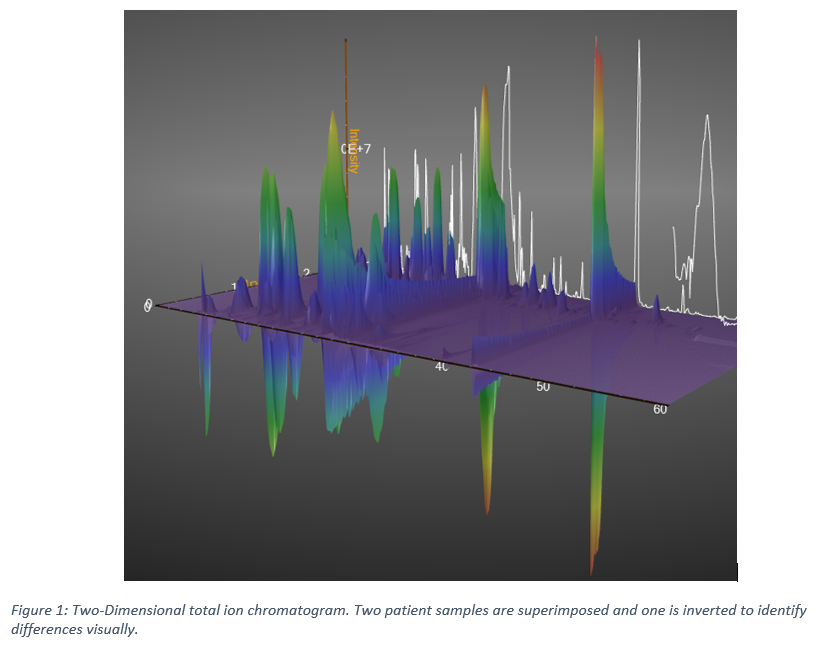(89d) Clinical Validation of Breath Biomarkers in Pediatric Tuberculosis Patients Using Comprehensive Two-Dimensional Gas Chromatography Time-of-Flight Spectrometry
AIChE Annual Meeting
2022
2022 Annual Meeting
Topical Conference: Chemical Engineers in Medicine
Medical Devices
Monday, November 14, 2022 - 9:03am to 9:24am
Current methods used for Tuberculosis (TB) testing are expensive and take days to weeks to provide diagnosis. Tuberculosis is widespread in the developing world and is the second leading cause of hospitalizations in the United States. The Advanced Materials and Microdevices Lab at the University of Utah is currently working on sensor applications aimed at designing a low-cost point-of-care sensor to improve access to tuberculosis testing in the developing world. These sensors are specifically designed to target tuberculosis volatile organic compounds (VOCs) in breath.
Many human diseases have corresponding breath VOC profiles and breath analysis is increasingly the focus of new diagnostic techniques. This diagnostic approach is non-invasive and can serve as a safer, less time intensive diagnostic tool than blood or sputum tests. A number of diseases have been found to have breath profiles unique to the disease; such as influenza, diabetes and pneumonia.
While two VOCs, namely methyl-nicotinate (MN) and methyl-p-anisate (MPA), have been uniquely identified as VOC indicators of active tuberculosis disease in adults, the data to date is inconclusive in the pediatric population.
With the aim of identifying more robust diagnostic biomarkers in children, the University of Utah in partnership with Makerere University in Uganda and the University of California, San Francisco are conducting a large VOC breath study with over 700 patients enrolled as of April 2022. A number of biomarkers correlating to active TB are being identified using two-dimensional gas chromatography, Time-of-Flight spectrometry (GCxGC TOF).
Methods
Breath samples are extremely complex. While many industries employing GC-MS are concerned with a handful of constituent sample elements, disease diagnostics must consider thousands of chemically similar trace-level endogenous and exogenous metabolic byproducts. While a well-designed sample acquisition method can employ chemical and thermodynamic principles to achieve reductions in inevitable peak convolutions, two-dimensional chromatography is capable of separating compounds using contrasting column stationary phases. This enables the magnification of small chemical differences and provides access to more trace compounds than could be seen with traditional GC-MS. Additionally, the TOF mass spectrometer provides a full-spectrum scan as opposed to a quadrupole resulting in no loss of ion data.
With greater volumes of data acquired using these technologies and methods, comes the need for improved data processing to make sense of it. We have developed data processing methods using the Chromcompare+ software from Markes International.
Finally, after likely biomarkers are identified, the compound identification must be validated by the use of known standards. The behavior of these known compounds must be compared to the ion signature of the suspected TB biomarker. This requires recognizing subtle differences in mass spectral profiles.
Significance
Tuberculosis kills millions of people unnecessarily every year. With the development of an inexpensive, real-time breath sensor, this would not have to continue. The foundational step in the sensor technology development is identifying a full breath profile of both pediatric and adult TB patients. This full breath profile will be used to create the first diagnostic breath sensing device with a sufficient sensitivity and specificity to achieve FDA approval.
This presentation will discuss each of these new developments in the application of GCxGC TOF systems to the breath biomarker validation process including the application of chemical engineering principles to complex sample separation and identification, how we arrived at optimized data processing using Chromcompare+ and newly discovered TB biomarkers.
